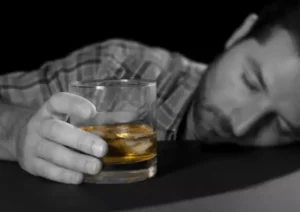Sober living
Opioid Use Disorder OUD: What It Is, Symptoms & Treatment

Opioid overdose is life-threatening and requires immediate emergency attention. Recognizing the signs of opioid overdose is essential to saving lives. If you’re currently taking prescription opioids and are concerned you may be developing a use disorder, talk to your healthcare provider immediately. An opioid overdose can happen when a person takes too much of an opioid or a combination of opioids and other drugs. Adverse childhood experiences (ACEs) are strongly related to the development of a wide range of health issues throughout a person’s lifespan, including substance use disorders. Having certain physical health conditions, such as chronic pain, can increase people’s use of opioids and the eventual development of OUD.
Signs of opioid abuse
This pattern can interfere with and cause problems in their daily life. Check out these best-sellers and special offers on books and newsletters from Mayo Clinic Press. The investigated insurer, Highmark, exhibited a number of violations that they have a corrective action plan to address, in addition to paying a fine of $329,000.
Common Signs of Opiate Addiction

Most hospitals provide an evaluation and assess the patient’s primary need, and then connect the patient to treatment. The hospital may admit someone who also has a significant medical problem in addition to the opioid use disorder. Early in the process of opioid use disorder, people may take an opioid drug because of the pleasurable effect. A person may take opioids more frequently or at higher doses to restore the euphoria or, as the condition progresses, to avoid withdrawal symptoms.

Death sentence reduced to life in prison for California woman who killed her 4 kids
Due to the toxic nature of these substances, users may develop brain damage or sudden death. Examples include methylenedioxymethamphetamine, also called MDMA, ecstasy or molly, and gamma-hydroxybutyric acid, known as GHB. Other examples include ketamine and flunitrazepam or Rohypnol — a brand used outside the U.S. — also called roofie. These drugs are not all in the same category, but they share some similar effects and dangers, including long-term harmful effects. Substituted cathinones can be eaten, snorted, inhaled or injected and are highly addictive. These drugs can cause severe intoxication, which results in dangerous health effects or even death.
People can also become addicted if they misuse the medicine (opioid use disorder) or use the drug illegally. Learn more about methadone vs Suboxone (buprenorphine with naloxone) for treatment of opiate addiction and withdrawal. Ask yourself some questions about your loved one’s personal risk of opioid use disorder and the changes you’ve seen. Reach out to your loved one’s healthcare professional if your answers point toward a possible addiction.
- Opioid withdrawal occurs as the body adjusts to a decrease or discontinuance in drug use.
- Individuals who are becoming dependent upon or addicted to opiates may deny their use for a couple of reasons, according to the Child Welfare Information Gateway.
- They trigger a chemical response in the brain that’s similar (but more extreme) to the pleasure that we derive from eating, drinking, caring for babies and having sex—all necessary for survival of the species.
- Opiates are known to cause weight gain, as opiate use often increases people’s preference for sugar, according to the US National Library of Medicine.
- Once a substance use disorder (SUD) is identified, it’s vital to seek support as soon as possible.
Physical Symptoms of Opioid Withdrawal

They may also experience psychological symptoms or changes in the way they think and behave. They may also take opioids or related substances to relieve or avoid these symptoms. They may have tolerance symptoms, such as needing increased amounts of opioids to produce the same effects. They may also experience reduced effects when using the same amount of opioids. Opioid use disorder (OUD) is when a person becomes dependent on opioid drugs. They feel that they cannot stop using them, despite negative consequences.
If you’re taking opioids and you’ve built up a tolerance, ask your healthcare professional for help. Other safe choices are available to help you make a change and keep feeling well. Don’t stop opioid medicines without help from a healthcare professional. Quitting these medicines suddenly can cause serious withdrawal symptoms, including pain that’s worse than it was before you started taking opioids.

A person suffering from addiction is incapable of controlling the level of their substance use. They may desperately want to quit, but they feel unable to do so on their own. However, a person who abuses drugs in large amounts or over extended periods of time is more likely to fall victim to an addiction. Unfair treatment of mental health conditions and other compliance issues uncovered, must be corrected. Prescription drug abuse in older adults is a growing problem, especially when they combine drugs with alcohol. Having multiple health problems and taking multiple drugs can put people at risk of misusing drugs or becoming addicted.
Opiate Symptoms And Warning Signs
- Depression and anxiety are often experienced by people who abuse opioids.
- Recognizing the signs of opioid overdose is essential to saving lives.
- Even when suffering from a substance use disorder, a person may deny that the problem is serious and resist efforts to help for a long time.
- Your loved one also is at greater risk of opioid use disorder if they get opioids without a prescription.
- Opioids are most addictive when you take them in a way other than how they were prescribed — for example, crushing a pill so that it can be snorted or injected.
These are some of the most common, and often overlooked signs of opiate addiction that anyone who is taking opiates or who knows someone who is taking opiates should be on the lookout for. Sometimes called the “opioid epidemic,” addiction to opioid prescription pain medicines has reached an alarming rate across the United States. Some people who’ve been using opioids over a long period of time may need physician-prescribed temporary or long-term drug substitution during treatment. Other drugs like heroin are illegally produced and distributed, which heightens the risk for overdose. Whether regulated or unregulated, prescription or illicit, all of these drugs have the potential for misuse, dependence and addiction.
Long-Term Effects of Opioid Overdose
- Opiates come in several different forms and can be consumed a number of ways.
- Withdrawal from these drugs can be very difficult and may be dangerous when done on your own.
- Opioid dependence simply refers to the development of tolerance or withdrawal.
- Treatment for opioid use disorder is available from health care professionals and may be provided on an outpatient basis or through a residential program such as a rehabilitation center (rehab).
Opioid abuse can cause the brain and body to become overly sensitive to pain. This often happens when someone is trying to cut back or quit using these medications. Opioids may also consist of street drugs, signs of opioid addiction such as heroin or synthetic fentanyl. To help identify whether someone is battling a painkiller abuse problem, there are several physical and behavioral warning signs to watch out for. It’s possible the city will settle with McKesson or AmerisourceBergen during the trial.
